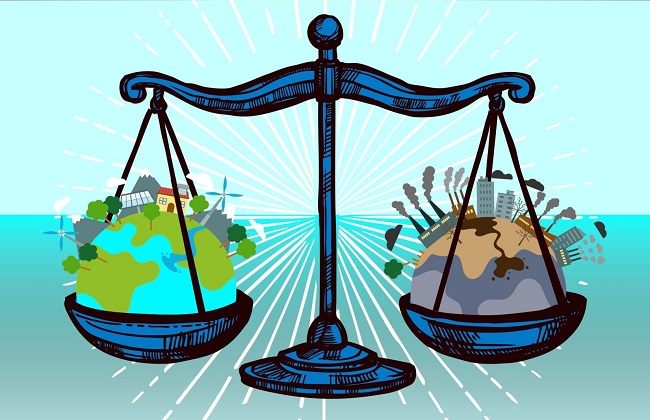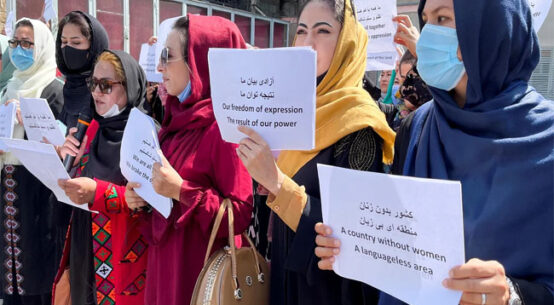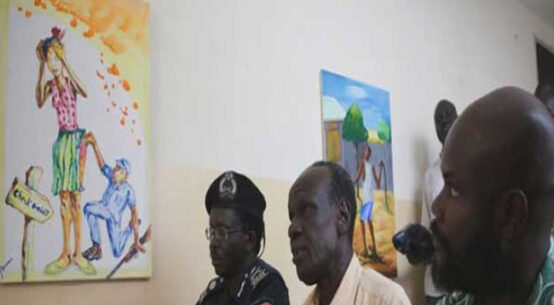
Climate justice recognizes differential impacts of climate crisis between rich and poor, women and men, and older and younger generations. The UN Secretary-General AntónioGuterres emphasized, “as is always the case, the poor and vulnerable are the first to suffer and the worst hit.” However, all people should have the agency to live life with dignity. Thus, climate justice looks at the climate crisis through a human rights lens.
Climate justice also recognizes that while “no country is immune”, impacts vary between rich and poor countries. And poor countries, lacking means to handle, are the worst sufferers, even though they contribute least to the crisis. This unfairness highlights unequal historical responsibility that countries bear in relation to the climate crisis.
Thus, climate justice synthesizes the recognition of rights and differentiated impacts. It asserts that every individual and country have the right to development, and the countries, businesses, and people that have become wealthy from emitting large amounts of greenhouse gases have a responsibility to help those affected by climate change, particularly the most vulnerable countries and communities, who often are the ones that have contributed the least to the crisis.
Differentiated contributions and impacts
The Intergovernmental Panel on Climate Change (IPCC) reports that between 2010 and 2020 human mortality from floods, droughts, and storms was 15 times higher in highly vulnerable regions. The IPCC also finds that globally, the 10% of households with the highest per capita emissions contribute 34–45% of global household greenhouse gas emissions, while the bottom 50% contribute 13–15%. It warns, children and young people today will bear the full force of climate change impacts as they advance through life even though they have not contributed to the climate crisis in a significant way.
The World Bank estimates that only one-tenth of the world’s greenhouse gases are emitted by 74 lowest income countries (LICs), but they will be most affected by the effects of climate change. The World Bank also finds that compared to the 1980s, these LICs have already experienced approximately 8 times as many natural disasters in the past 10 years. It warns, by 2050, unchecked climate change might force more than 200 million people to migrate within their own countries, pushing up to 130 million people into poverty and unravelling decades of hard-won development achievements.
Within the same country, the impacts of climate change may be felt unevenly due to structural inequalities based on race, ethnicity, gender, and socioeconomic status. For example, women are more severely affected; people with disabilities are at increased risk, including threats to their health, food security, access to water energy, and sanitation, and livelihoods; and Indigenous Peoples are facing increasing threats and risks to their lives, livelihoods, and traditional knowledge.
Six dimensions of justice
Climate justice “insists on a shift from a discourse on greenhouse gases and melting ice caps into a civil rights movement with the people and communities most vulnerable to climate impacts at its heart,” said Mary Robinson, former President of Ireland and former United Nations High Commissioner for Human Rights.
Thus, climate justice encompasses ideas of fairness, equity, and ethical responsibility. It goes beyond simply mitigating carbon emissions; and delves into the distribution of climate impacts, the participation of marginalized communities in decision-making, and the recognition of diverse perspectives and experiences related to climate change.
A survey of Australian environmental groups reveals 6 dimensions of climate justice – distributive justice, procedural justice, recognition justice, relational justice, inter-generational justice and transformative justice.
Distributive justice emphasizes that some countries and communities disproportionately bear the brunt of climate change and its costs. Procedural justice calls for the inclusion of impacted countries and communities in decision-making processes.
Relational justice highlights the importance of fostering collaborative relationships between countries, groups and communities to advance climate justice. Fair, equal and respectful relationships are seen as essential in developing equitable climate change responses.
Intergenerational justice expresses concerns about the impacts of climate change on future generations. Protests by hundreds of thousands of schoolchildren highlight the intergenerational injustice of climate change. They demand world leaders to act now to save the planet and their future.
Transformative justice focuses on social and institutional inequalities that drive and perpetuate climate change. Some argue that addressing climate justice requires a fundamental shift away from the capitalist global economic system. Others argue for fair transition to a low-carbon world while creating jobs and driving more rapid and inclusive economic growth.
Climate justice highlights the over-arching principle, “Leve No One Behind”, of the UN Agenda 2030 for Sustainable Development Goals (SDGs).
Climate justice demands translating commitments into reality, enabling stronger and deeper collaboration, and facing up to the greatest challenge of our times.
As Mary Robinson emphasized, “by working together we can create a better future for present and future generations”.
Failed commitments widen trust deficits
Sadly, as Oxfam draws attention, Rich countries’ continued failure to honour their US$100 billon climate finance promise – made at the 2009 Copenhagen Climate Summit – threatens negotiations and undermines climate action. Oxfam also exposes the claim by the OECD – a rich country club – that “Developed countries materially surpassed their USD 100 billion climate finance commitment in 2022”.
Independent assessments by the World Resources Institute (WRI) and Overseas Development Institute (ODI) reveal that such exaggerated claim is due to flawed accounting systems. After adjusting data to eliminate double counting, produces smaller numbers than the OECD. The country-by-country breakdown of responsibility shows that very few are contributing enough.
Climate finance analysts criticized the quality of climate finance and the way the OECD calculates the figures. Harjeet Singh, a veteran climate justice activist, said the process of providing and accounting for climate finance “is riddled with ambiguity and inadequacies. Much of the funding is repackaged as loans rather than grants and is often intertwined with existing aid, blurring the lines of true financial assistance”.
Climate finance continues to be predominantly delivered as loans a large share of which has been non-concessional. This has added to debt pressures.
Developing countries remain frustrated and sceptical as they lost trust due to developed countries’ continued failure to meet their overall aid commitment of 0.7% of GNI agreed more than half a century ago.
Common, but differentiated responsibilities
The unmet US$100 billion commitment will expire in 2025, anyway. The US$100 billion goal is a fraction of what is needed to support developing countries to achieve climate goals of the Paris Agreement.
The United Nations Framework Convention on Climate Change finds that developing countries will require at least US$6 trillion by 2030 to meet less than half of their existing Nationally Determined Contributions.
As UNCTAD highlights, developing countries face the double challenge of simultaneously investing in development and in climate mitigation and adaptation, while addressing the costs of loss and damage.
The scale of this challenge is staggering when close to 900 million people in the world do not have access to electricity, and more than 4 billion people do not have a social safety net they can rely on.
This challenge can only be met by truly upholding “common, but differentiated responsibilities”. That is, when rich countries and communities recognize their non-immunity and respect the development rights of poor countries and vulnerable communities. Only then will a new spirit of cooperation usher in to establish climate justice.
Anis Chowdhury, Emeritus Professor, Western Sydney University (Australia) & former Director of UN-ESCAP’s Macroeconomic Policy & Development Division.


